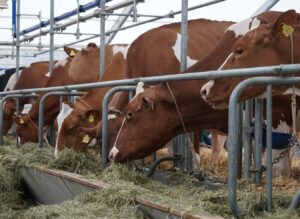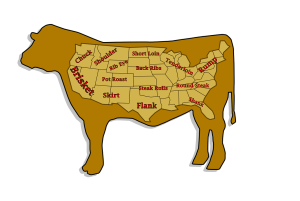Mercedes González & Fernando Diaz
Consuming insects as a food source is a traditional practice in many parts of the world, particularly in Asia, Africa and Latin American countries, since they are rich in nutrients, especially protein, comparable to beef and fish. They also contain high levels of fatty acids, fiber, copper, iron, magnesium, phosphorus, manganese, selenium and zinc.
Until a few years ago however this was not culturally acceptable in Western countries, although they are beginning to be better received, incorporated into gastronomy as an exotic ingredient. The Food and Agriculture Organization considers them as a safe and nutritious item, with very good conversion rates when fed to livestock, and a sustainable source of food when artificially grown, since they emit lower rates of greenhouse gases than other livestock species.
All these advantages have meant that the possibility of incorporating insects as an ingredient in animal feeds, including ruminants, has received greater consideration. The progressive increase in the world’s population is also expanding the demand for animal protein, so raising animals for beef production poses an increasing challenge, especially from an environmental perspective.
On the other hand, this higher protein demands also mean that farms must be increasingly effective and more productive, by incorporating new feed sources which contribute to improving feed efficiency are critical, without neglecting sustainability and environmental care. Insects are safe and nutritious and can be incorporated into ruminant rations, usually in the form of flour.
Main species of insects used for animal feed
The species of insects that can be grown as an animal feed source are the black welded fly (Hermetia illucens), domestic fly (Musca domestica), mealworm (Tenebrio molitor), minor flour beetle (Alphitobius diaperinus), domestic cricket (Acheta domesticus), tropical domestic cricket (Gryllodes sigillatus), and field cricket (Gryllus assimilis).
Flies and beetles are usually supplied in the form of larvae, and the crickets in the adult form. This usually represents an inconvenience, since there is high variability in terms of their nutritional composition between the larval and adult phase. Breeding techniques are currently perfected and managed to produce more consistent batches in terms of their fat content (highest variability, with between 5 and 50% on a dry matter basis) and protein (which can exceed 50-60%).
The substrates on which insects are bred must be standardized to achieve insect-based feed products with homogeneous composition, rich in high quality protein, vitamins and minerals.
Another possible advantage that would bring the introduction of insect flour in the feeding of ruminants would be to reduce the dependence on some traditional protein sources such as soybeans (meal, cakes) and other oilseeds, whose production is beginning to be threatened by the scarcity of cultivated land to cope with the growing demand, coupled with the competition for human food.
However, as with human food, there may be a reluctance on the part of farmers to introduce these new ingredients into animal diets (neophobia), since little is known about their use, and just the fact that they are insects.
Insects could become an alternative protein source for ruminants
Therefore, much research remains to be done to improve the culture of insect species to incorporate them into ruminant feeding. Insects are still a promising alternative as a high-quality protein source, despite the challenges of batch homogeneity in terms of nutritional composition to be able to better formulate rations, and the understand of their impact on dry matter intake and production.
Their contribution could soon face the growing demand for animal protein in an expanding world population, and they will represent a sustainable and environmentally friendly animal feed source, with high nutritional value. New lines of research in this field will provide interesting information.
Reference
Laura Gasco, Gabriele Acuti, Paolo Bani, Antonella Dalle Zotte, Pier Paolo Danieli, Anna De Angelis, Riccardo Fortina, Rosaria Marino, Giuliana Parisi, Giovanni Piccolo, Luciano Pinotti, Aldo Prandini, Achille Schiavone, Genciana Terova, Francesca Tulli, Alessandra Roncarati. Insect and fish by-products as sustainable alternatives to conventional animal proteins in animal nutrition. Italian Journal of Animal Science. 2020 Abr; 19(1): 360-372.
© 2021 Dairy Knowledge Center. All Rights Reserved.











